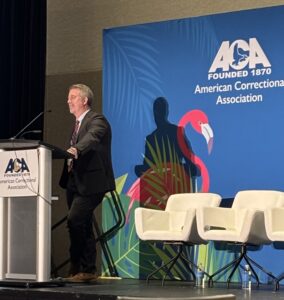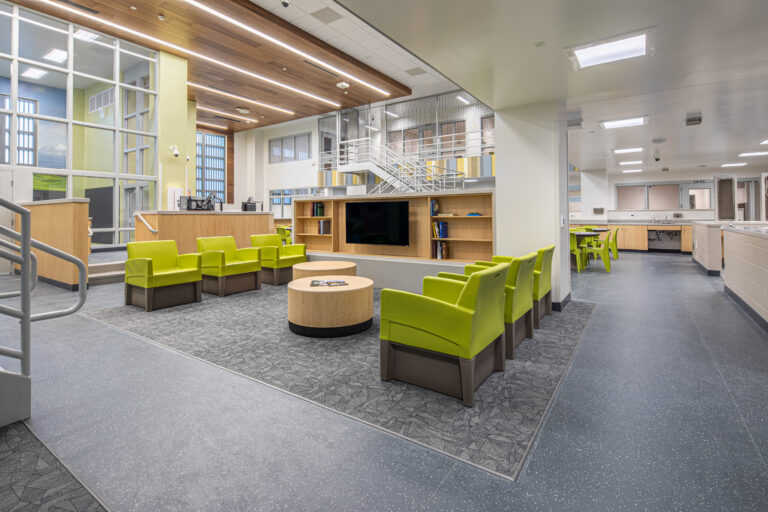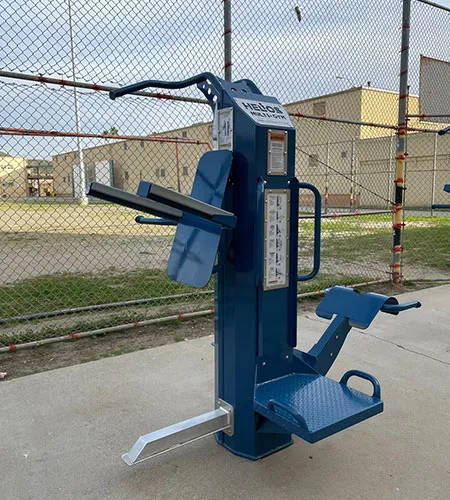Shaping the Future of Corrections: Insights from the 2025 ACA Winter Conference

By Kat Balster
The 2025 American Correctional Association (ACA) Winter Conference, held Jan. 10-14 in Orlando, Fla., brought together correctional professionals, policymakers and industry leaders to discuss the evolving landscape of corrections. With a focus on facility innovation, security advancements and rehabilitative efforts, the conference underscored the importance of collaboration in improving the corrections system nationwide.
Modernizing Correctional Facilities

Photo Credit: Correctional News
One of the most anticipated events was the inaugural Evolving Spaces Facilities Symposium, where industry experts explored ways to modernize outdated correctional facilities. ACA Robert Green, ACA executive director, opened the session by emphasizing the need for innovation and practical improvements in facility design. Internationally recognized expert and Correctional News Industry Knowledge Council member Stephen Carter, founder of CGL Companies, highlighted advancements in human-centric design and sustainability. Robbin Timme, Psy.D., of Falcon Inc. further discussed the psychological impact of purpose-built spaces, reinforcing the link between environment and inmate rehabilitation.
The symposium featured a series of presentations addressing legal, ethical and clinical drivers of change in correctional facilities. Timme examined how class-action litigation and evolving care standards are influencing facility renovations and construction. DLR Group’s Linda Bernauer, senior associate, Ruairi Barnwell, principal, and Helen Ho-Supanich, Ph.D., associate and senior design researcher, presented research on the impact of indoor air quality on staff well-being, emphasizing how enhanced ventilation and filtration can improve working conditions in aging buildings.
Security and Facility Management
Brooke Martin, senior associate Bruce Omtvedt, associate principal, and Brad Hall, senior principal at Dewberry delivered key presentations on correctional facility management. Martin discussed facility design strategies for long-term inmate populations, focusing on the needs of people who will remain in the system indefinitely. Omtvedt examined security risks in aging facilities, highlighting concerns such as outdated electronics, poor sightlines and ADA non-compliance. Hall provided insights into managing construction projects within active correctional facilities, ensuring minimal disruption to daily operations.
A standout case study came from Tony Shaffer, bureau chief for construction, activation, maintenance and sustainability at the Ohio Department of Rehabilitation and Correction alongside DLR Group’s team of Lori Coppenrath, principal and Mark VanAllen, civic and justice design lead. They shared a master plan for modernizing Ohio’s 94-year-old Chillicothe Correctional Institution while preserving its historic character. The plan included adaptive reuse, strategic demolition and new facility additions, all without requiring long-term relocation of existing residents.
Drone Detection and AI Integration
Security remained a key topic at the conference. The Drone Detection and Deterrence Symposium featured Special Agent Greggory Phillips, who detailed law enforcement’s latest strategies in combating contraband drone deliveries. Utilizing cutting-edge technologies such as cell tower triangulation, Phillips demonstrated how agencies are adapting to the ever-evolving threat of drones in correctional environments and presented a case study on anti-contraband efforts by the state of Georgia.
Rich Siddons, vice chair of the ASTM F33 Committee, stressed the importance of updating security standards to align with industry advancements.
“Ensuring that correctional facilities meet modern security standards is a top priority. Our committee is actively working to revise outdated regulations and implement innovative solutions to enhance facility security,” Siddons said.
The role of artificial intelligence in security was another highlight. JE Dunn, R&N Systems and Ambient AI presented on the integration of AI-driven surveillance, which proactively detects and prevents security threats in correctional facilities.
Facility Planning and Design
The ACA Facilities Planning and Design Committee marked a milestone by meeting as a permanent committee for the first time, reflecting the ACA’s commitment to enhancing correctional environments. Hawaii’s delegation presented its plans for the replacement of the aging Oahu Community Correctional Center (OCCC), focusing on restorative justice and rehabilitation-centered facility design.
Tim Hancock, executive director of justice for Vanir, reflected on the event’s impact.
“The ACA conference wasn’t just about corrections—it was about the human spirit, resilience and the importance of collaboration. Seeing leaders come together to share ideas and solutions was truly inspiring,” Hancock remarked.
Inspiration and Leadership Development

Photo Credit: Doug Beichley, JE Dunn
Beyond the technical discussions, the conference fostered inspiration and motivation. A keynote address from Olympians Hunter and Tara Davis-Woodhall captivated attendees. The accomplished track-and-field athletes shared their journey of perseverance and mutual support, drawing parallels between success in athletics and professional collaboration in corrections.
A Women of Distinction panel addressed gender equity in correctional leadership. Women from various areas within the industry shared their experiences of breaking barriers and leading meaningful change. This summit opened with remarks from ACA President Denise Robinson, who shared her experience in community corrections and her passion for uplifting others. Following discussions on career paths and leadership, panelists engaged with attendees in small groups for networking and guidance.
Looking Ahead toward the Future of Corrections

Doug Beichley, senior design manager for JE Dunn Construction and Correctional News Industry Knowledge Council member, emphasized the significance of the networking and discussions at the event.
“This year’s ACA Winter Conference provided a wealth of quality programming and valuable connections. The industry is on an upward trend, and events like this pave the way for meaningful progress,” Beichley said.
The exhibition hall showcased innovative products and services, offering attendees a hands-on look at the latest industry advancements. Networking opportunities abounded, allowing professionals to forge connections and share expertise.
As the ACA Winter Conference concluded, attendees reflected on the wealth of knowledge gained and looked ahead to the next gathering—the 155th Congress of Correction in Denver this August. With an emphasis on modernization, security and rehabilitation, the 2025 ACA Conference set the stage for continued progress in corrections nationwide.





